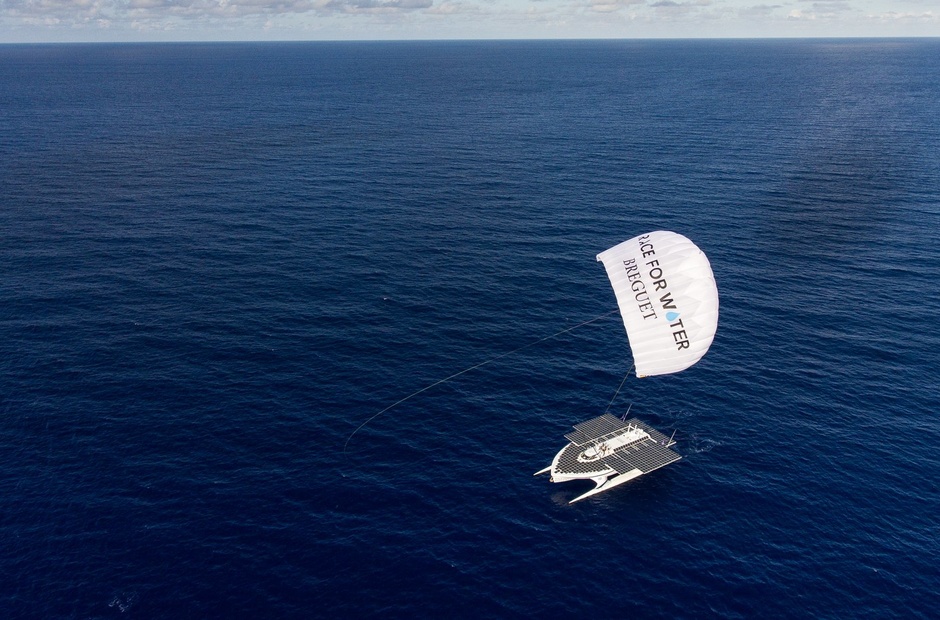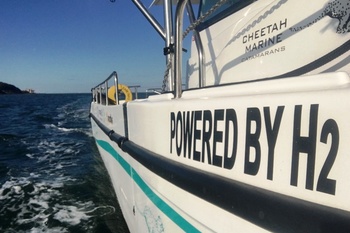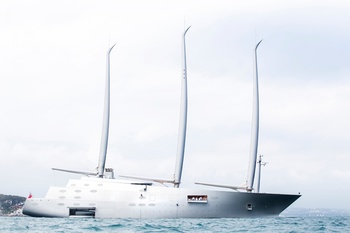The environmental agenda is becoming more and more important year after year. The world of yachting has not been left behind. The two main challenges faced by manufacturers are the reduction of engine emissions and the careful use of resources in construction. We have collected four examples of different solutions found by boat builders.
Energy Observer
This 30.5 meter catamaran has been seen in Russia this year. As part of his round-the-world voyage from 2017 to 2022, he came to St. Petersburg on June 17th.

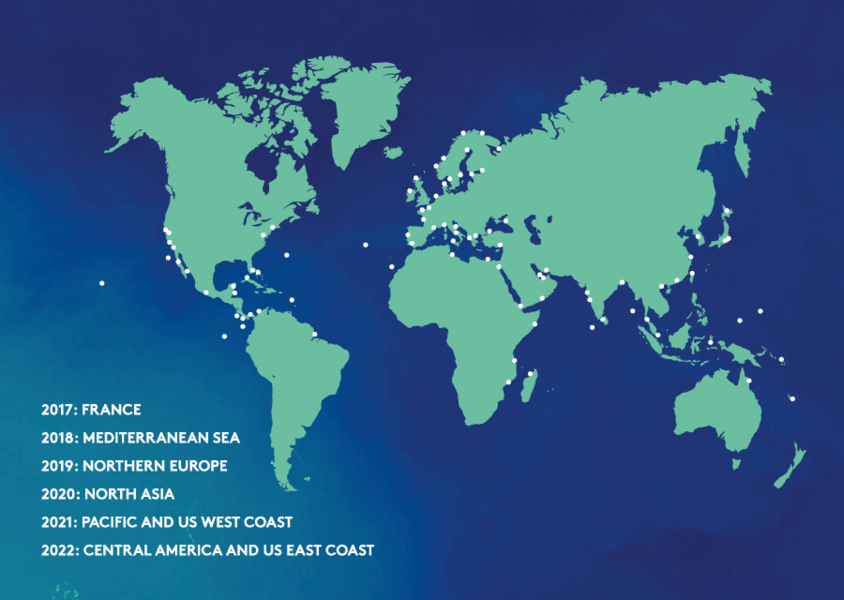
Like now, the ship was far from always. Originally it was an ordinary sports sailing boat. If so, of course, one could say at all about a maxi catamaran 24.4 by 12.8 meters. The hulls were built in Canada in 1983. The boat was used by Formule TAG, Tag Heuer, Enza New Zealand, Royal & SunAlliance, Team Legato and Daedalus.
The year 2016 was a turning point in the catamaran's destiny: the ship was lengthened, solar panels were installed on the deck instead of the rankout and rigging, and below deck there is a unique unit that allows the electrolysis to generate hydrogen directly from sea water.
Such fuel is more than 4 times more efficient than coal, gasoline - almost 3 times and natural gas - almost 2.5 times!

That's how Energy Observer, the first autonomous hydrogen ship, was born. The creators themselves call it a «model for future energy systems: digital, carbon-free and decentralized . Essentially, the catamaran became a floating experimental laboratory on creation of power independent system.
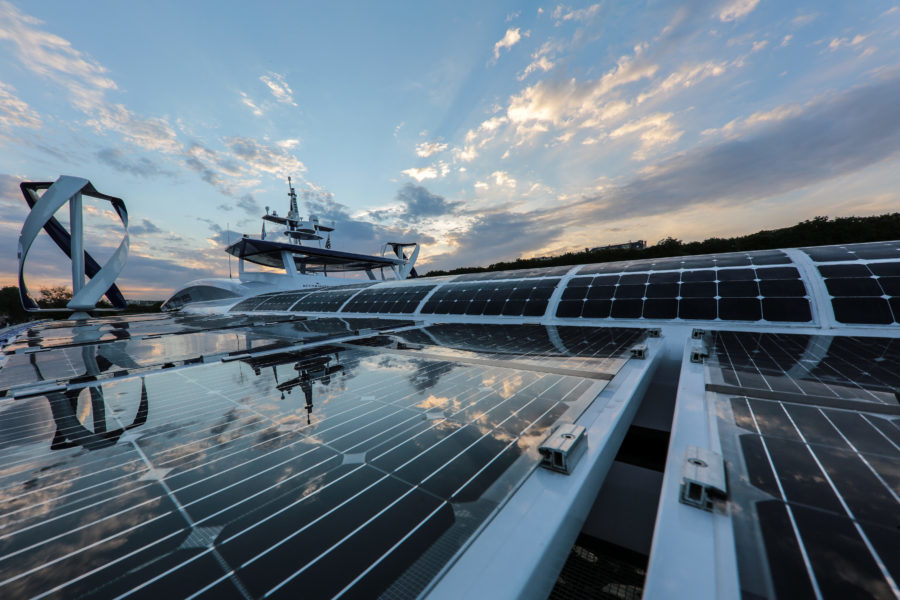
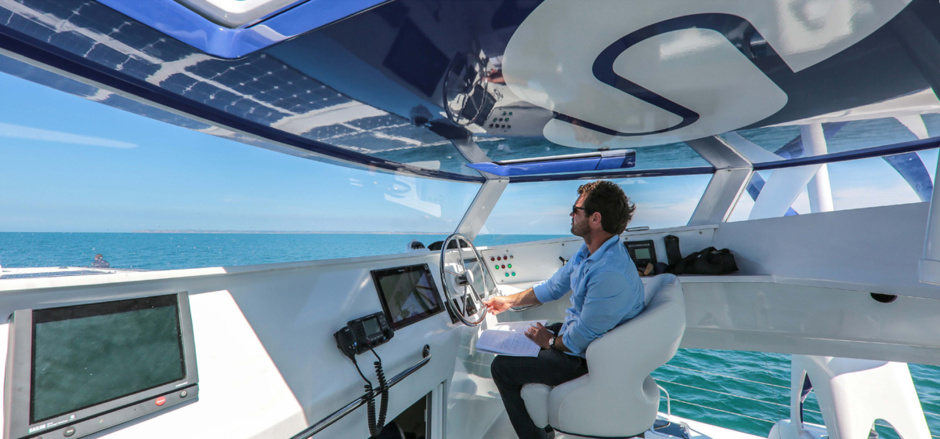


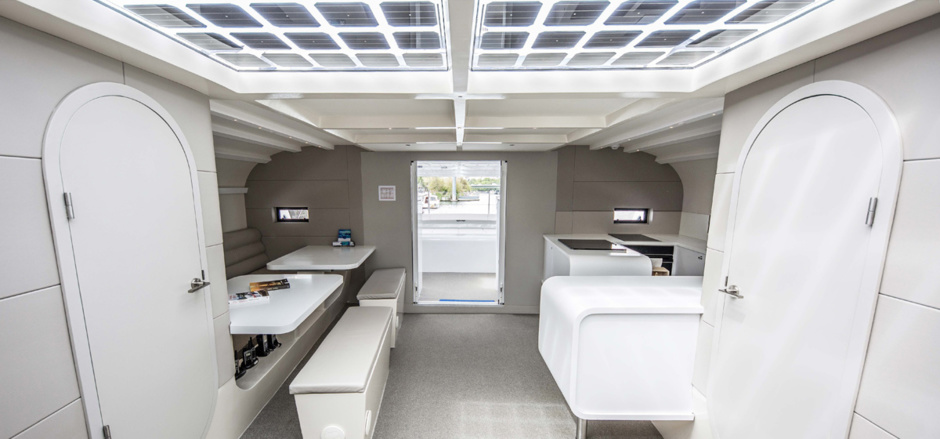
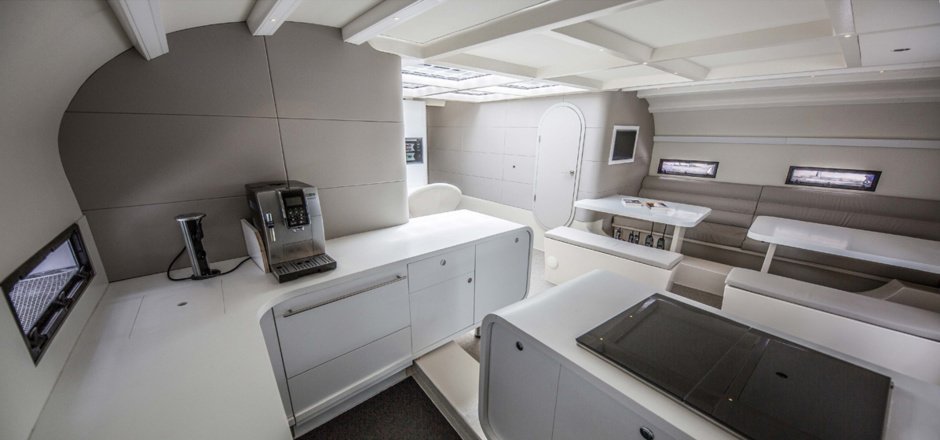
And every component of this system is tested daily for durability in the most extreme conditions. What is the transition of the Energy Observer length of 5700 km from St. Petersburg to Spitsbergen, where the team arrived August 10, 2019! The catamaran was the first vessel to undertake an expedition to the Arctic using only hydrogen and renewable energy sources: no CO2 emissions, no noise and no plume of fine particulate matter in the water.
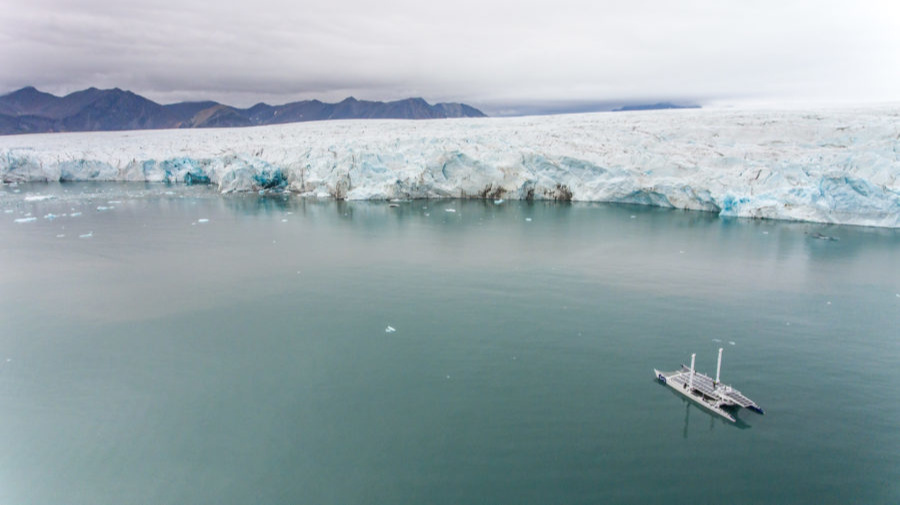
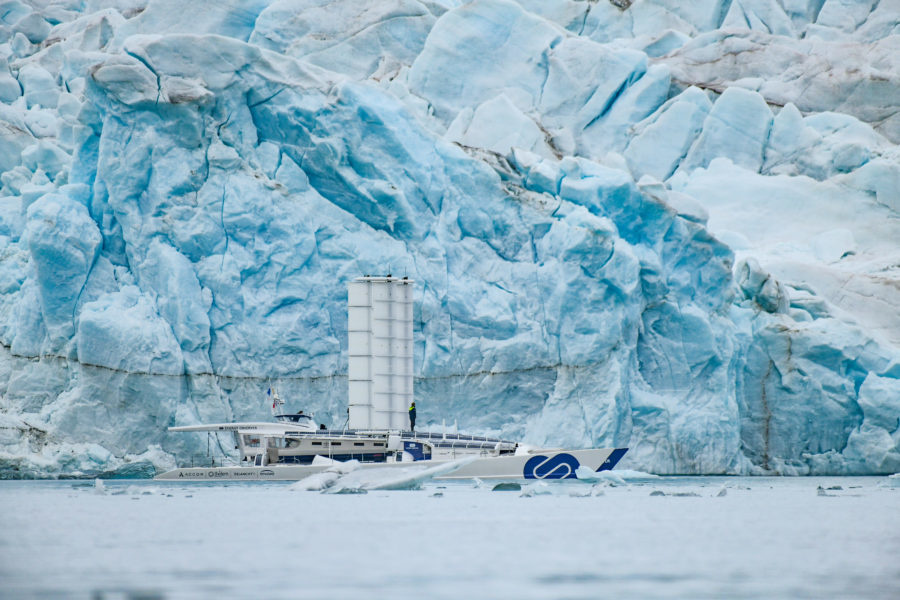
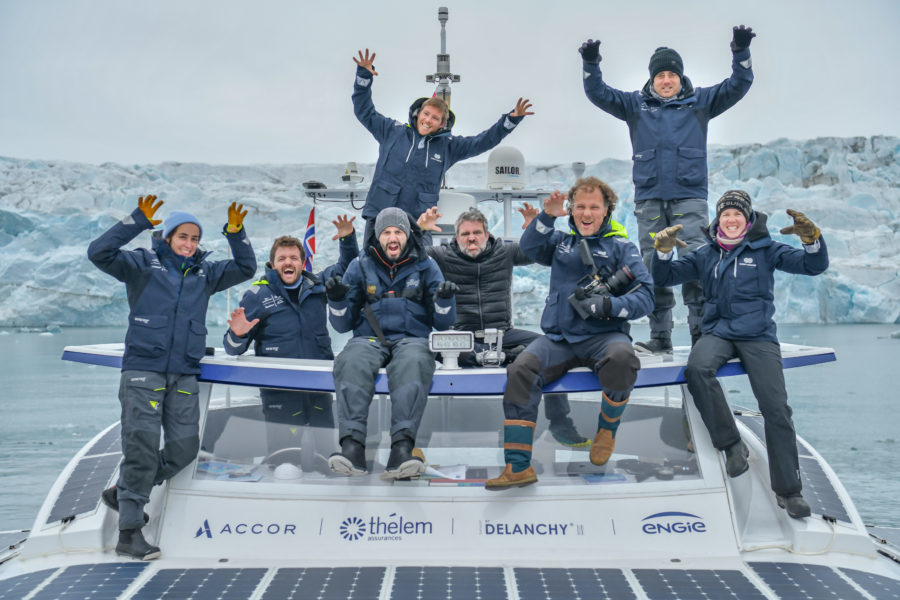
PlanetSolar
As big as the Energy Observer, the title of the largest solar «catamaran» in the world does not belong to him. This proud title belongs to PlanetSolar, a catamaran designed by New Zealand naval architect Craig Loomes. Although the length and width of the hull itself is 30 and 16 meters respectively, with panels overhanging the water it is 35 meters long and 26 meters wide.
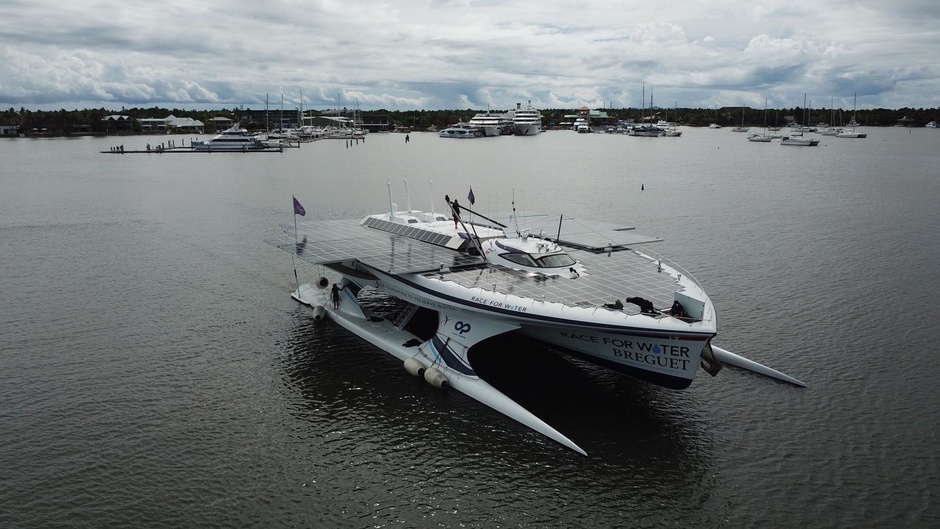
The total area of the solar panels covering the «deck of the» catamaran is 512 square meters. By comparison, they only occupy 168 square meters on the Energy Observer.


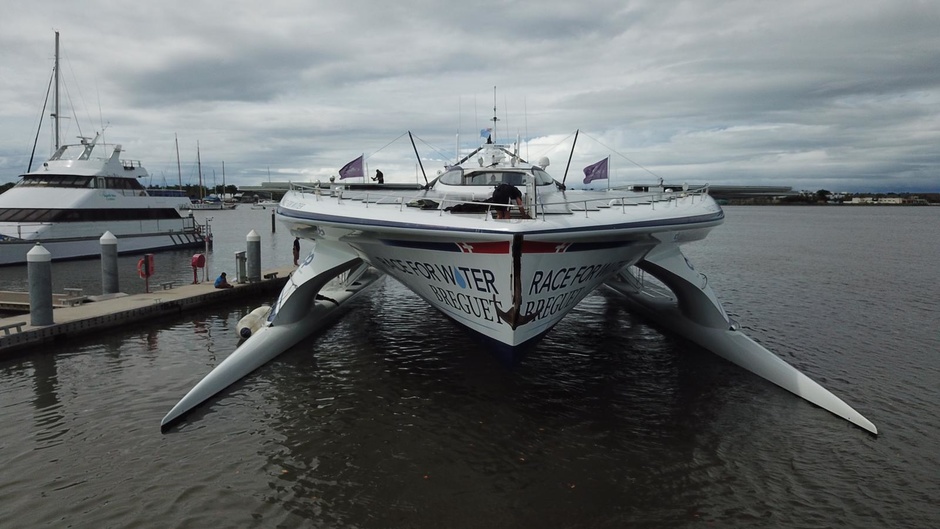
Construction of PlanetSolar began in Germany at the Knierim Yachtbau in Kiel in 2008. As in the case of the Energy Observer, it was important for the team to show that the renewable energy technologies available on the market at the time were already sufficient to be used as a complete alternative to fossil fuels.
The launch of the catamaran took place on 25 February 2010. After the sea trials PlanetSolar went to its first round the world.
To tell you the truth, that's what the catamaran was originally built for. The Swiss explorer Raphaël Domjan conceived it, struck by climate change, the consequences of which he saw with his own eyes when he came to Iceland first in 1993 and then in 2004.
The first PlanetSolar journey lasted two years.
No boat has ever enveloped the globe before, using only solar energy.
In addition to this, the team had a number of other smaller achievements: the fastest transatlantic solar-powered transition, the longest voyage using solar panels, the first solar-powered crossing of the Red Sea and the Indian Ocean.
The crew of the catamaran is only 5 people, on solar energy (68% of the time) it moves at an average speed of 4 knots. If necessary, the crew can release a self-controlled sail-kite of 40 square meters at a height of 150 meters. The catamaran can then speed up to 8 knots without an electric motor.

«For a rainy day on» board, 25 containers hold 7.5 cubic meters of hydrogen, enough to walk for 6 days at an average speed of 4 knots.
In 2017 the catamaran has gone to the second round-the-world trip which will last till 2021. In 5 years the vessel will make about 35 stops. The expedition was called «Race» for water. The boat itself was also renamed.

The goal of the new round the world is to promote ways in which plastic, which is up to 80% of the world's garbage, can be used to generate electricity.
One such solution is the Biogreen technology developed by ETIA based on a high temperature pyrolysis reaction (oxygen-free thermal decomposition). Compared to conventional waste incineration, pyrolysis has much lower emission levels. At high-temperature reaction (at temperature over 900 °С) the amount of waste after processing is minimal.
To date, the catamaran has reached southeast Asia. On October 23rd the crew is scheduled to arrive in Hong Kong.
Plastic Odyssey
The participants of the French project Plastic Odyssey Expedition decided to go further than their colleagues from Race for water suggest. Processing plastic and getting electricity and heat is a great idea. So why not do it right on the boat?
Already in 2020, Plastic Odyssey will be the first boat in the world whose engines eat«plastic» garbage.
For this purpose it is planned to install on board a furnace for low-temperature (about 400 °С) pyrolysis. It will produce up to 40 litres of fuel per hour.
Installing such a system on the boat will be an innovative step. But in essence it will be just an adaptation for the boat of existing, tried and tested on land furnaces. For Plastic Odyssey, the system is expected to be mobile, affordable and easy to maintain.
Like the Energy Observer, the 30 meter long explorer will be a kind of laboratory that provides testing of new technologies with its very existence. The ship will be divided into two zones: the stern half, «the processing station with the pyrolysis» furnace will be responsible for cleaning«up the past, and the bow», with a conference room and an exhibition of alternative plastic use methods, will be responsible for building the future.«The crew quarters, also located forward, will show what the hotel rooms of the future can be like, and the galley, which does not use plastic at all, will inspire restaurateurs.
It is noteworthy that originally it was planned to use a 25-meter catamaran for this project.
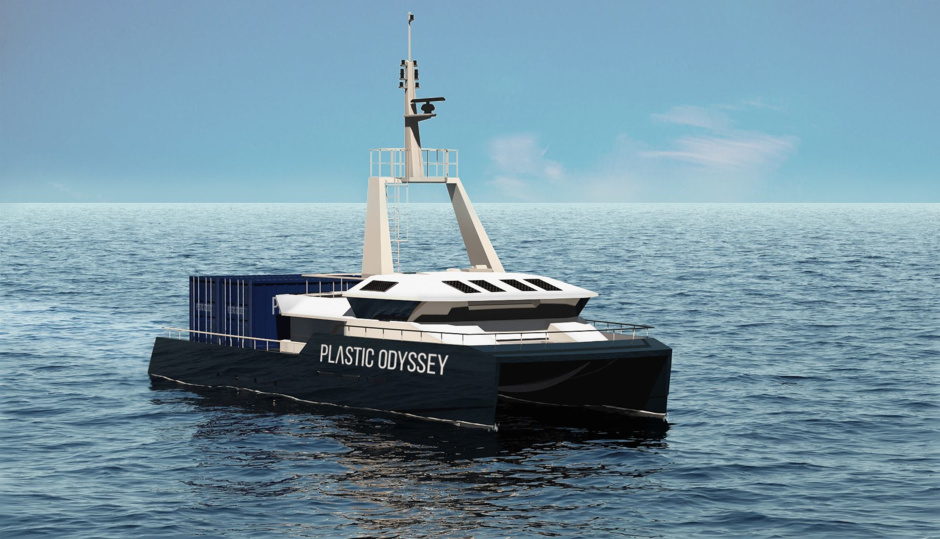
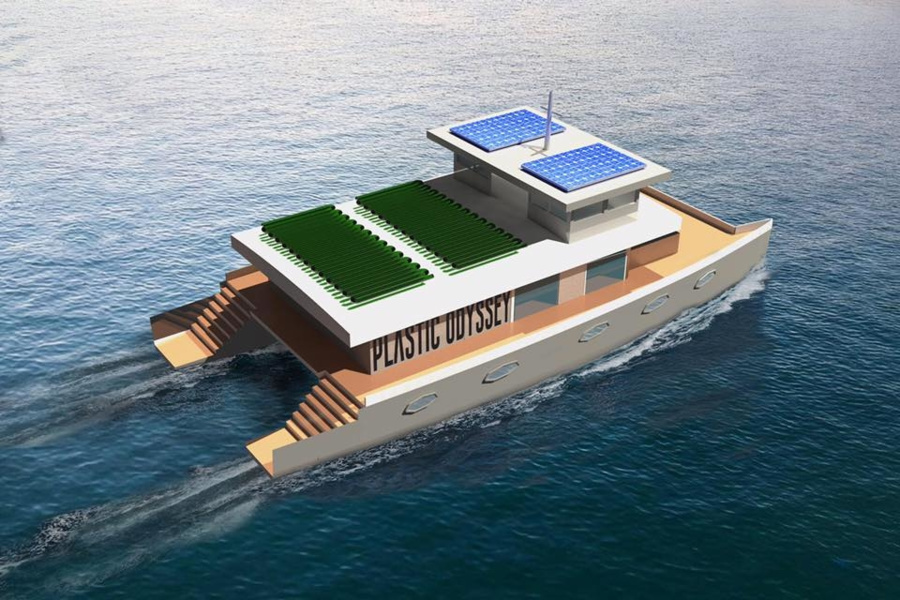
However, the team later came to the conclusion that they need a vessel with a bigger interior volume. However, there were other reasons to adjust the concept.
«The idea of a catamaran that fights plastic garbage was confusing: most people thought that the boat would directly collect waste from the surface of the oceans. With a new ship, there's no more doubt. It will be an explorer-symbol that will interact directly with the source of the problem, with the land, -»explains the leader of the expedition Simon Bernard.
Raw materials for pyrolysis will be collected mainly during the port stops. After all, the water surface in the ocean only floats around 1% of the waste.
It is also quite consistent with the nature of the project that they did not build a new ship, but rebuilt an old one. One suitable abandoned ship has already been found in the north of Scotland, near Glasgow. Another «candidate», a former passenger ship, is standing in Finland.
When the work at Plastic Odyssey is completed, the vessel will be on a three-year voyage to South America, Africa and Asia.
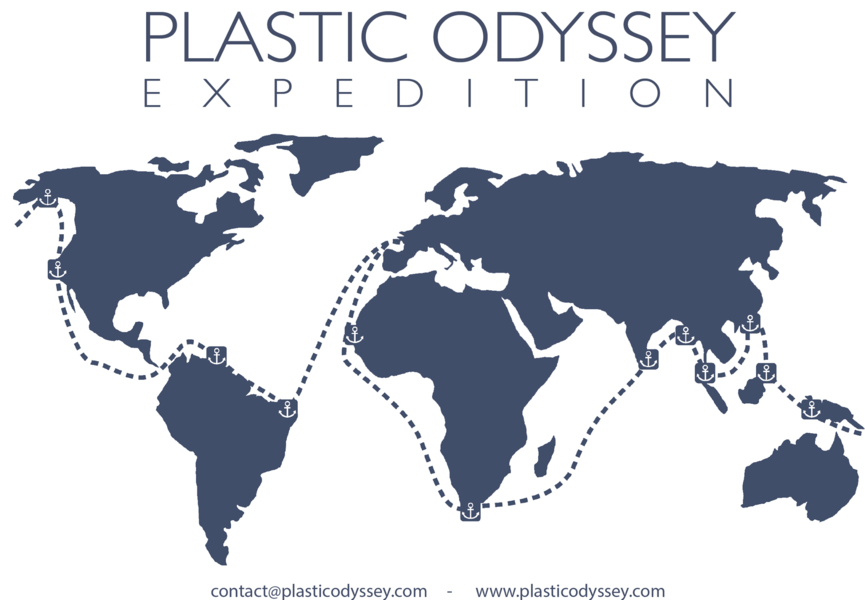
There will be a team of 12-20 people on board, consisting not only of professional sailors but also scientists, film crew and journalists. The team hopes to inspire local companies to build plastic recycling centres.
Newcastle Marine Safira
Another much more common alternative to traditional fossil fuels is biodiesel derived from rapeseed, soybeans, vegetable oils and animal fats. One striking example of the use of this technology on board a superyacht is the 39.3 meter Safira. The Explorer was created on a custom design at the Newcastle Marine Shipyard in Florida in 2012.
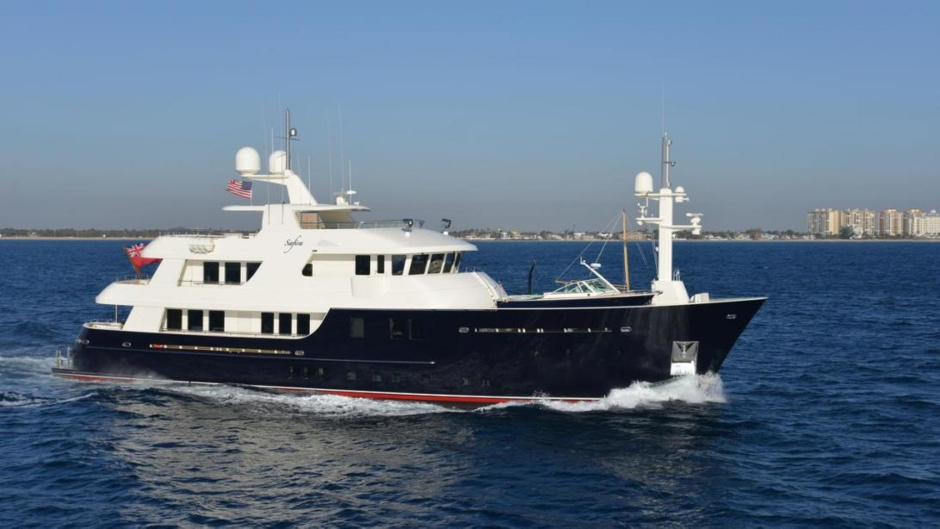
Two Caterpillar C32 ACERT engines with an output of 660 hp accelerate the Safira to 13.3 knots. At 11.1 knots, it can cruise up to 5000 nautical miles independently. And all this, using 15% biodiesel.
You can mix fuel in the right proportion on board.
There is a separate double-chamber tank for daytime fuel reserve.
The azimuth bow thruster with Schottel Rudderpropeller screws is about 20% more efficient than its competitors, which certainly increases the efficiency of the boat as well.
LED lighting saves energy for the batteries. This makes it possible to install smaller Northern Lights generators on board, which consume less fuel.
Another «green» and perhaps even more interesting feature of Safira is its deck cover. For the simple observer, it looks and feels like a tick. However, this composite material is actually called Esthec.
«80 hectares of teak forest are cut down daily!» - warns the manufacturer.
Subsequently, up to 60% of the wood is simply discarded due to knots or inappropriate patterns.
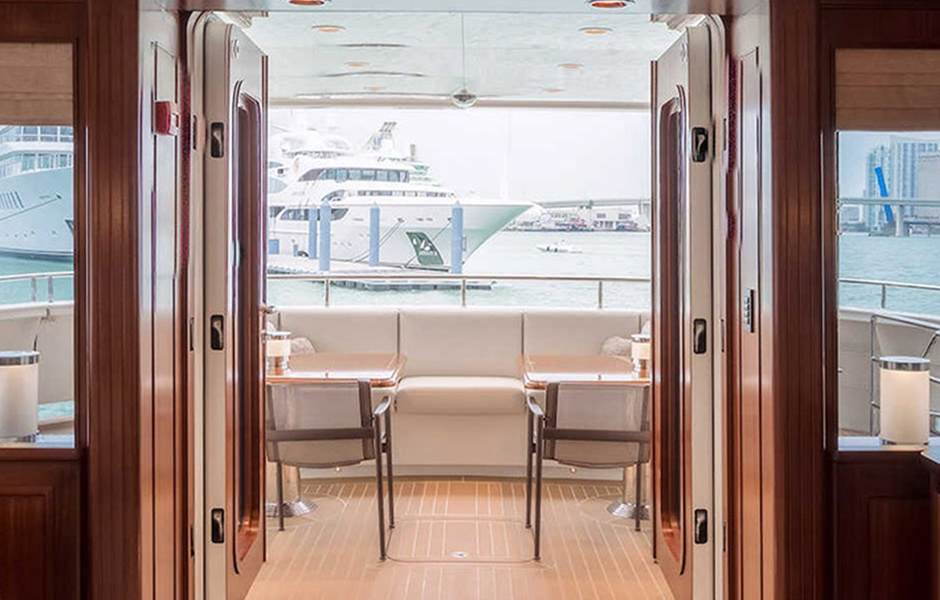
The Safira cabins have also been designed with care for resources. Mahogany for furniture and decoration from Westhoff Interiors has all the necessary certificates and the wood is used very economically: a large part of the facades are covered with silk.


The floors in the guest areas are lined with oak left over from another project. The same goes for the stone finish.

